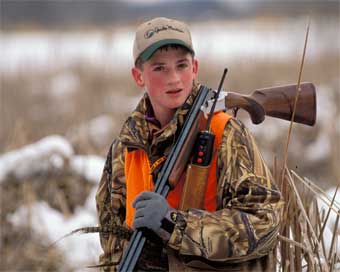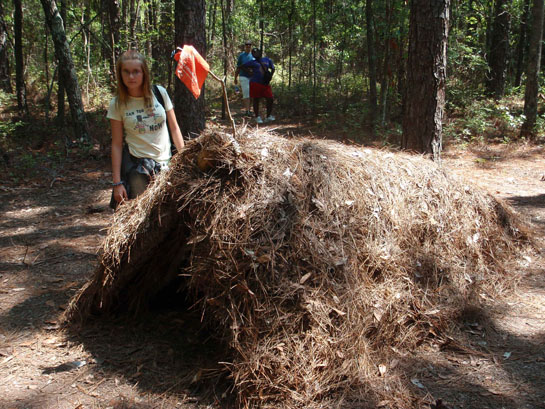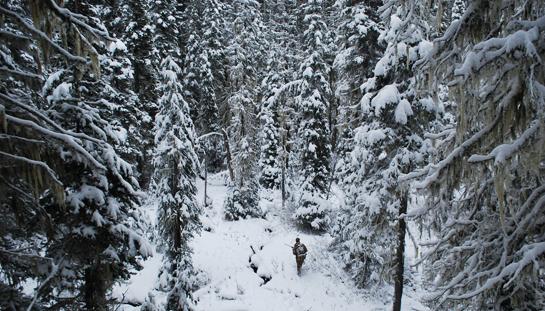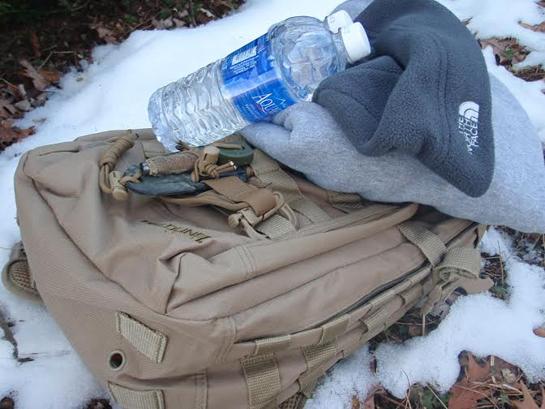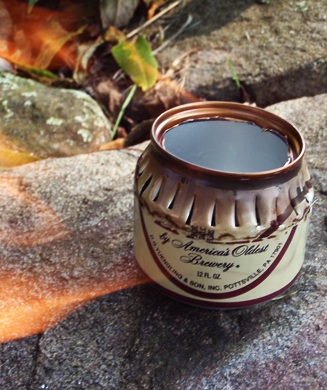Here’s your chance to test your survival savvy on 10 topics. These are all situations outdoorsmen frequently find themselves in. Knowing the right answers to these questions will help you stay alive.
1 While hunting high in the Western mountains, you see the flash of distant lightning and hear the rumble of thunder. Which of the following is the best place to seek protection?
a) In a cave that you spot in the side of the mountain.
b) In your tent, among a thicket of low trees surrounded by a forest of larger trees.
c) Under a clump of bushes on the otherwise open slope of the mountainside.
d) Lying flat on the ground at the bottom of a ravine, covering yourself with a poncho.
2 You are caught miles away from camp by a sudden storm. The rain lasts all day, soaking your clothes. Heavy shivering signals the onset of hypothermia. You need to get a fire going fast, but it appears there is no dry wood or tinder to start the blaze. What are you going to do?
a) Look beneath branches along the tree trunks for dry dead twigs.
b) Instead of wasting time standing around in the rain, just take shelter under a tree.
c) Try to light the wet wood. Eventually it will start to burn.
d) Keep hiking to return to camp. If you hike hard enough, you will dry out.
3 You’re hunting mule deer in the slick-rock desert of southern Utah. The heat is intense and your canteen has run dry. You have a water filter in your pack, but you can’t find a water source. What now?
a) Put a pebble in your mouth to slow dehydration.
b) Hike north to the mountains, where you’ll find lakes and streams.
c) Climb to the plateau tops to search for water.
d) Bury yourself in the cool sand to conserve your body fluids.
4 It’s winter. You’ve driven down a remote trail and gotten your vehicle stuck. Night is coming. What do you do now?
a) Immediately leave the vehicle where it is and hike out to safety before it gets any darker.
b) Stay with the vehicle and wait for someone to come and find you.
c) Stand on top of the vehicle and yell for help.
d) Honk the horn as a distress signal.
5 It’s the third day of being stranded in your vehicle. The sun is bright, but the temperature is below freezing. You’re beginning to think that nobody is ever going to find you. What’s the right thing to do?
a) Fire three rounds into the air, in the hope that somebody will hear the distress signal.
b) Build a smoky fire.
c) Leave a note on the vehicle and try to hike out.
d) Try again to get the vehicle unstuck.
6 Bears invade your fishing camp and drag away your food supply. Sure, you can eat fish for the rest of the trip, but you’d like to add some of the foods that grow in the area. You’ve noticed that there are lots of berries. Some are red, some are nearly black, some are orange and some are white, and you wonder which ones are edible. What’s the best thing to do?
a) Eat none of the berries, because you don’t know which ones are safe.
b) Eat only the red ones.
c) Eat only the nearly black ones.
d) If the red and black ones look like raspberries and blackberries, see if they taste right.
7 Your hunting buddy looks a little gray as he climbs out of his tent. He complains of shortness of breath and exhaustion. He says he didn’t sleep very well, and he is achy in his back and neck. He’s a little wobbly on his feet and says he feels like he’s going to vomit. What should you do for him?
a) Hand him a cup of coffee and try to cheer him up.
b) Tell him to go back to bed.
c) Fix a comfortable place for him to sit, and give him an aspirin.
d) Feed him a big breakfast, and get hunting!
8 Night overtakes you on an unfamiliar trail, and you are not prepared to spend the night away from camp. You estimate that camp is three miles to the south, but the hilly country doesn’t permit you to see the campfire in the canyon where your buddies are enjoying their dinner. How can you get there safely?
a) Just keep going, and rely on your “inner compass.” You’ll get there eventually.
b) Take note of where the sun went down. That’s west, so if you want to go south, just keep that point to your right as you continue your hike.
c) Stop and make the best emergency camp you can. Wait until morning to continue.
d) When it’s too dark to see, keep the night wind against your right cheek to go south.
9 The trip plan you left showed you were overdue and gave the rescuers an idea of where to start looking for you. Now there are search planes overhead, and you hope your long ordeal is about to end. What can you do to help the rescue team get you out safely?
a) Put on colorful clothing, position yourself out in the open and wave like a madman.
b) Sit under the trees for protection.
c) Shine your signal mirror at the airplane cockpit every time it flies overhead.
d) After the plane leaves the area, pack up your gear and move camp to be closer to the place where ground teams will be starting the search.
10 Your fishing boat has overturned nearly a mile from land, throwing you and all your gear into the 60-degree water. There’s no one else around. What is the right thing to do?
a) Climb on top of the overturned boat.
b) Swim for shore.
c) Take off your clothes to avoid hypothermia.
d) Hang on to the boat but stay in the water, because the water is warmer than the air.
ANSWERS
1. B. Positioning yourself among a thicket of low trees in a forest of larger trees is the best strategy. Lightning will likely hit the tallest object it can find. Avoid touching anything metal. As long as you can hear thunder, stay sheltered. Lightning can strike from a distance of many miles, in advance of an approaching storm or after the storm has passed. Lightning is only one of your concerns, though. A tent will protect you from the rain and wind, helping prevent hypothermia. If you don’t have a tent, wear a poncho to shelter yourself and squat down with your feet together. This posture gives you the least amount of electrical ground, providing the highest probability of survival in the event of a nearby lightning strike. Oddly enough, a cave is a dangerous place in a lightning storm. Lying flat on the ground increases your exposure to electricity conducted through the ground from a distant strike.
2. A. You might find dead twigs in the canopy that are dry enough to burn. For tinder, search at the base of trees, where it’s mostly dry. Dig down into the forest litter to find dry material, or shred the tree’s inner bark and form a bird’s nest from the fibers. Forget trying to ignite wet wood–you’ll only waste your fire-starting equipment. Sitting around in wet clothes without a fire or expending energy in a hard hike in wet clothes is a fast track to hypothermia.
3. C. In slickrock country, there are “water pockets” in natural depressions in the hard sandstone layers. The top of a plateau is a good place to search for these water tanks, which hold rainwater from past storms. But be careful when climbing, and don’t expend excessive energy in your search. It is often possible to locate water pockets in hard sandstone formations down lower. Wherever there is exposed sandstone, explore for water pockets.
4. B and D. Stay with the vehicle. Searchers are far more successful at finding lost or stranded people if they stay near the vehicle than if the victims wander away, leaving only footprints to follow. From time to time, use the horn to try to rouse the attention of anyone who might be in the area. In fact, use every opportunity, both visible and audible, to attract attention. Then be patient and stay with the vehicle.
5. B. Build up your signal fire, and position yourself near it so you can stay warm. A smoky fire by day and a bright blaze at night are very effective distress signals. Both will attract the attention of searchers and lead them to your location.
6. A and, possibly, D. If you want to be absolutely safe, go for A. You’re not starving to death, so adding the berries to your diet is not a matter of life and death. Color doesn’t tell the whole story. There are deadly red berries as well as perfectly edible ones. To be safe, you must know which is which before tossing it in your mouth. If you like to live on the edge, you might do a taste test of one berry and then wait an hour to see if there are any ill effects (although I don’t recommend this method). Edible wild raspberries, blackberries, salmonberries, gooseberries, thimbleberries and others are common–even prolific–in some forested areas. Get to know these plants before your trip.
7. C. Your buddy might be exhibiting the early signs of a cardiac problem. Symptoms include shortness of breath, discomfort in the upper body (including the back and neck), nausea, lightheadedness–all of which your friend is complaining about. Immediate action includes calling 911 to request medical help. Because a high percentage of heart attack victims fail within an hour of the first symptoms, getting medical help quickly is important. Help the patient sit upright in a comfortable position, with knees bent and drawn up a bit. This will aid in breathing and take some of the pressure off his heart. If an aspirin is available, give it to him, as it may help increase his chances of survival. Be ready to perform CPR.
8. C. Even if you knew where you were going, hiking three miles in hilly country at night would take several hours. Being on an unfamiliar trail, it could take forever, since a trail is easy to lose after dark. Stop, look around for the best campsite available, and do what you can to improve it for a quick overnighter. Get a fire going and hunker down until morning. Hiking at night is an invitation to injury or getting totally lost. Shortly after the sun goes down, you’ll lose contact with that indicator of west. Night winds are not reliable indicators of direction.
9. A. Make yourself as visible as possible by getting out in the open and displaying as much colorful clothing or gear as you have. Wave your arms or wave a bright piece of clothing; motion is one of the easiest things to spot from a search plane. Once you have the pilot’s attention, don’t keep shining your signal mirror into the cockpit with each pass–you’ll risk blinding the pilot. By all means, stay put. Don’t move once they’ve spotted you. As ground teams approach, make noise so they can zero in on your location.
10. A. Get out of the water and up onto the boat. Even though the air is cold, the water will drain your body heat more quickly. Being in the water also leaves you vulnerable to drowning as hypothermia sets in and you lose the ability to tread water or hold on to the boat. Do not attempt to swim to shore. In water that cold, you would suffer what is known as “swimming failure” very quickly and drown. Stay atop your boat, keep your clothes on and try to attract someone’s attention.
 A spaceblanket will protect you from the elements, as well as serve as a signalingdevice.

